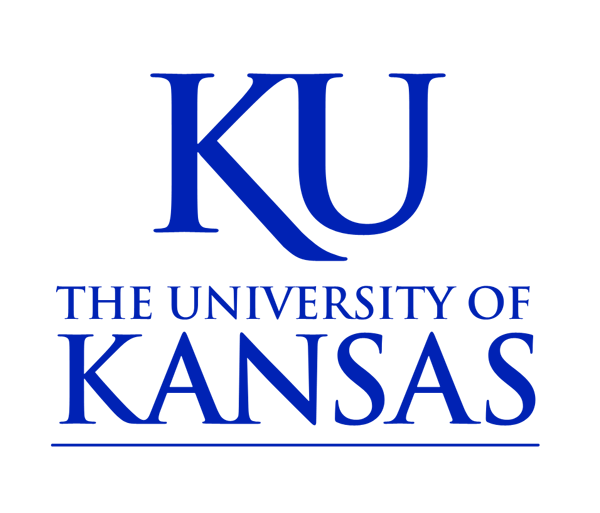Headlines
Contact: Mike Krings, 785-864-8860, [email protected]
Study: Women leaving jail have high vaccine hesitancy; health app reduces resistance, boosts literacy
LAWRENCE — The United States has the highest population of incarcerated citizens among developed nations. Every year, roughly 2 million women, the majority held in jails, leave incarceration. The COVID-19 pandemic hit jails and correctional facilities harder than almost any other societal setting. Many of the people leaving incarceration are returning to communities that were also disproportionately affected by the pandemic, yet many people in that population have expressed hesitancy to receive a COVID-19 vaccine.
New research from the University of Kansas found high rates of vaccine hesitancy among women transitioning from incarceration, due to a multitude of reasons, including low health literacy, lack of trust in authorities, and misconceptions about COVID-19 and the vaccine. The COVID-19 pandemic has further affected these women who already had low compliance with cancer screening and prevention recommendations, and they had limited knowledge about topics such as women’s health. An online app developed by KU researchers to boost health literacy among this population may be an efficient and cost-effective way to address multiple health topics.
Vaccine hesitancy among women leaving incarceration
Researchers at KU and KU Medical Center published a study in the journal Public Health Nursing about vaccine hesitancy among the target population. It was co-written by Mugur Geana, associate professor of journalism & mass communications and director of KU’s Center for Excellence in Health Communications to Underserved Populations; and Sherri Anderson and Megha Ramaswamy, Department of Population Health at KU School of Medicine. Researchers interviewed 25 women recently released from jail between March 5 and 25. The women were part of a larger cohort participating in a National Institutes of Health-funded study on health literacy among incarcerated women, of which Ramaswamy is principal investigator.
While the vaccine was not yet widely available at the time of interviews, the results showed 52% of respondents said they were definitely not willing to receive a vaccine. Only 20% said “yes, they would vaccinate.” In addition to those refusing to vaccinate, various degrees of hesitancy were found: 12% said yes, they would vaccinate, but only if they were required because of work or family reasons, while 8% said “maybe, but not right now.” Additionally, 4% of respondents said “they would not refuse it if offered but would not voluntarily pursue it” or “yes, with serious concerns.” The 76% total hesitancy was attributed to a number of factors such as mistrust in government or the pharmaceutical industry, not having enough information on how vaccines work, listening to conspiracy theories, returning to anti-vaccination communities and others, the authors said.
“We tried to better understand their perceptions and knowledge about COVID-19 and vaccines,” Geana said. “We expected to find some hesitancy among these women, but not at these levels. To a certain extent, some of those factors for hesitancy can be addressed or corrected through better education and information provided by people they trust. They can also be addressed by health literacy interventions like those we are developing.”
The authors argue the results indicate not only is health education needed for the studied population, but that assumptions should not be made about why people are hesitant to receive a vaccine. There are legitimate reasons, such as health factors preventing some from being able to take vaccines; health providers, communicators and others should not rush to judgment about those who are hesitant. While there is not much preliminary data available about pandemics and women transitioning from incarceration, the results do align with previous research findings that low-income groups and women are two of the most significant predictors of COVID-19 vaccine uncertainty and refusal.
“Probably the No. 1 lesson from this study is that there is an immediate need for intervention about both COVID-19 testing as well as the COVID-19 vaccine for underserved populations,” Geana said.
Online intervention to improve women’s health literacy after incarceration
Researchers also recently published a study sharing the results of testing of an online health intervention designed to boost health literacy on topics deemed important to women leaving incarceration. The study focuses on the development and pilot testing of an online intervention specifically designed to boost women’s health knowledge among the aforementioned underserved population. Published in the Journal of Health Care for the Poor and Underserved, the study was written by Geana and a team of researchers directed by Ramaswamy from the KU School of Medicine.
The researchers partnered with an advisory board, including women transitioning from incarceration, to determine what health topics were important to this audience and the most appropriate format for information delivery. CEHCUP developed the website structure and programming, and it produced the multimedia content for health modules on the topics of sexually transmitted infections, cervical cancer, reproductive planning and breast health. The KU School of Medicine team tested the effectiveness of the online resource, called the SHE WOMEN mHealth Intervention. The project was funded by the National Institutes of Health.
“The way health information for this population is delivered is mostly by in-person sessions during incarceration. A doctor or nurse talks with them for a half-hour or so, and they move on,” Geana said. “We decided to move away from that model and use multiple sessions that transition seamlessly and where users can start with any module they like, when they feel they are ready to learn about their health. The web app was designed to collect varied data so we could use it as a research platform to capture usability metrics as well as testing their retention and understanding of the provided information. The research team was also able to interact with the participants individually, if needed, through the web app.”
The results showed their knowledge and health literacy improved, and interactions with participants revealed high satisfaction with how the information was delivered. Participants stated they appreciated seeing videos featuring people that reflected their communities, being able to ask questions, receive text messages from researchers reminding them about participation and getting usable information on topics that were central to their lives and health.
The encouraging results show that such an online health literacy intervention can be a successful way to boost knowledge of vulnerable populations in an understandable way, the researchers said, and they plan to study how to make similar programs more widely available and affordable to similar populations across the country. To that end, the researchers also proposed 10 steps for those looking to develop similar programs for boosting health literacy in underserved populations. Chief among them was to form an advisory board of members from the target audience to identify relevant topics, provide feedback on technology, user experience and content development.
“It doesn’t matter how much a researcher interacts with an underserved population, we can never have the same experience,” Geana said. “The only way to cater to them effectively is to have them as part of the research team.”
————————————————————————
KU News Service
1450 Jayhawk Blvd.
Lawrence KS 66045
Phone: 785-864-3256
Fax: 785-864-3339
[email protected]
http://www.news.ku.edu
Erinn Barcomb-Peterson, director of news and media relations, [email protected]
Today’s News is a free service from the Office of Public Affairs



